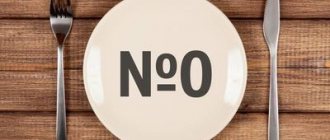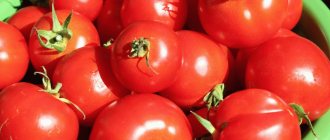- June 25, 2018
- Gastroenterology
- Yulia Obolenskaya
Is it possible to eat pumpkin if you have gastritis? This is a question patients often ask doctors. In addition, they are interested in whether this product is useful for their illness. Let's look into these issues.
Pumpkin has a delicate texture, which makes it suitable for dietary nutrition. From such a product you can easily prepare healthy and tasty dishes, such as casseroles, soups and puddings. Pumpkin contains many minerals and vitamins. At the same time, there is a minimal amount of fiber, which can create heaviness and irritate the stomach.
What's the benefit?
Pumpkin is rich in nutrients. In addition, it is soft in texture. Therefore, many doctors say that pumpkin for gastritis should be included in the diet. They also advise those who have other gastrointestinal disorders to use it. The peculiarity of this product is that it is rich in nutrients. There is iron in pumpkin.
It takes part in various processes of the body. Also ensures healthy blood circulation.
Pumpkin contains vitamins A, C, K, T. These elements help the normal functioning of the immune system.
Those who consume pumpkin are believed to have a reduced risk of cancer. Potassium is also found in pumpkin. This element is necessary for the cardiovascular system. In addition, pumpkin contains substances that help normalize blood sugar levels.
Compound
Other vegetables might be jealous of the pumpkin. It contains:
- vitamins of the whole group;
- amino acids;
- iron;
- magnesium;
- potassium;
- polyphenolic compounds;
- fluorine;
- copper;
- sodium;
- manganese;
- calcium;
- cobalt;
- fluorine;
- carotene;
- zinc.
Due to the high concentration of macro, microelements, vitamins, the vegetable is recommended to be taken in the treatment of numerous diseases. This is a dietary product, so it can be included in the diet for ulcers and gastritis.
Pumpkin for gastritis of the stomach
The pulp contains a small amount of fiber. This is good for patients with gastritis. Since pumpkin, when it gets into the stomach, does not injure its walls. In addition, the product is easily absorbed during digestion.
When it enters the stomach, it deactivates hydrochloric acid. Therefore, pumpkin is not recommended for gastritis with low acidity. This means that it is better to abstain from the product so as not to aggravate the course of the disease. But for gastritis with high acidity, pumpkin is allowed. It will significantly alleviate the patient's condition. Pumpkin for erosive gastritis is also allowed.
When preparing dishes with this product, you should not use hot spices. So as not to irritate the stomach. Instead of spices, you can supplement dishes with parsley and dill. Such seasonings will not harm your health. It is best to steam or bake pumpkins.
Then you can save all the useful elements. When cooking according to classic recipes, replace unsuitable ingredients with approved ones. For example, low-fat sour cream is an excellent alternative to butter.
Restrictions and contraindications
This healthy vegetable has a very delicate texture and has a gentle effect on the body, but there are still contraindications to taking it:
- Hypersensitivity or individual intolerance to pumpkin.
- In its raw form, it is not recommended for gastritis with low acidity.
- Baked sweet varieties are contraindicated for diabetes.
Important! The temperature of the product should be moderately warm before consumption: hot and cold food will cause pain and harm inflamed tissues.
pumpkin juice
We have already learned when to eat pumpkin for gastritis. What about juice, is it possible? It is recommended for use by those who have gastritis with high acidity.
This juice can be stored in the refrigerator for a long time. At the same time, all elements and vitamins will be preserved in it. Among the beneficial characteristics of juice, I would like to highlight the fact that freshly squeezed juice normalizes digestion.
Fresh juice also suppresses the secretion of excess hydrochloric acid and increases the amount of bile. In order to improve digestion, doctors recommend drinking juice before each meal. The course of treatment takes ten days.
Why diet is important
The acute stage of gastritis is accompanied by such unpleasant symptoms as abdominal pain, nausea, a feeling of bitterness in the mouth, and heartburn. Therefore, proper nutrition must be approached with full responsibility.
Basic Rules:
- exclusion of products containing coarse fibers;
- limiting bread, sweets, fat, raw vegetables, spicy, spicy, salty foods, marinades, rich broths;
- soups should be pureed;
- there is a taboo on carbonated and alcoholic drinks.
If you follow these simple rules, your recovery period will speed up. As you can see, raw vegetables are prohibited, including pumpkin. But many healthy dishes can be prepared on its basis.
Can I eat pumpkin seeds?
Of course, they have a positive effect on a healthy body. The seeds help equalize the volume of lipids and glucose in the blood, and facilitate the easy removal of feces and harmful metals.
These grains also contain important acids and proteins. Therefore, they are good for the brain. But if you have gastritis, you should not eat seeds. Because they will not bring any benefit. Rather, on the contrary, once in the stomach, the seeds injure the already irritated mucous membrane and increase the secretion of acid. Seeds fried in oil are especially harmful for a person with gastritis.
Useful properties of the vegetable
Due to its diverse chemical composition, pumpkin has a positive effect on the body :
- improves digestion;
- activates metabolic processes;
- normalizes carbohydrate and lipid metabolism;
- removes waste and toxins;
- removes excess fluid from the body;
- accelerates the breakdown of fats;
- acts as a laxative;
- increases endurance and performance;
- reduces the irritating effect of physical and chemical factors, slows down their absorption from the gastrointestinal tract;
- increases the elasticity of the walls of blood vessels, prevents the development of atherosclerosis;
- pumpkin seed oil is used to treat parasitic diseases;
- stabilizes liver functions.
Pumpkin provides quick satiety due to fiber , which allows you to reduce the volume of portions and, accordingly, helps normalize weight.
The process of making soup at home
- First, put a saucepan with a liter of water on the fire. Then bring it to a boil.
- Then remove the top layer from the onion. Then place the intact head in boiling water.
- Then use a blender to chop the carrots. Then pour into a pan of water and wait ten minutes.
- Then cut off the skin of the pumpkin and chop the small pulp into cubes.
- Then add the fruit to the broth. Then cover with a lid. Continue cooking until the pumpkin pieces are cooked through.
- Then turn off the heat. Add chopped herbs to the soup. Cover the pan with a lid. Let it sit for ten to fifteen minutes.
- Afterwards, puree the finished soup with a blender.
In what form should I use it?
Raw pumpkin is a very dubious pleasure if you have a stomach problem. It will be difficult for an inflamed organ to digest a raw product. It is much healthier to eat boiled, stewed pieces. There are recipes for fried pumpkin too. But, like any other food cooked in a frying pan, the fruit is not recommended for consumption. The juice also worked well. Firstly, it is quite easily and quickly digested. Secondly, it can be stored in the refrigerator for a long time while maintaining all its beneficial properties.
For people with chronic gastritis, pulp containing a huge amount of vitamins is recommended. Just do not use spices when cooking - they greatly irritate the walls of the stomach. Regardless of the form of the disease, the food consumed should not be too hot or, conversely, cold.
Step-by-step cooking process
- First, peel the pumpkin. Then cut it into small cubes.
- Then pour the milk into the container, put it on the fire, throw the pumpkin in there.
- Then add pure millet and sugar to the boiling mixture. Keep it on the fire until the porridge is cooked.
- Then beat the eggs.
- Take a baking dish and grease it with oil. Then sprinkle with crackers.
- Cool the cooked porridge to sixty degrees. Mix with beaten eggs. Then pour it into the mold.
- Place in the oven until golden brown.
Pumpkin soup
You will need:
- 400 g pumpkin;
- 1 carrot;
- 1 onion;
- 150 g honey mushrooms;
- butter for stewing;
- salt to taste.
Cooking method:
Grind the mushrooms and onions in a meat grinder and simmer in butter.
Boil pumpkin and carrots in salted water and turn into puree. Combine with onions and mushrooms, add chopped parsley, salt, and mix in a blender.
Pumpkin salad
You will need:
- 250 g pumpkin;
- 2 apples;
- 1 kiwi;
- ½ cup chopped walnuts;
- 1 tbsp. a spoonful of orange juice;
- honey to taste.
Cooking method:
Finely chop the pumpkin, apples, chop the kiwi, add orange juice and honey, mix, sprinkle with chopped walnuts.
Pumpkin with raisins
You will need:
- 500 g pumpkin pulp, peeled and seeds removed;
- 2 carrots;
- ½ cup seedless raisins;
- 1.5 cups cream;
- ¼ cup sugar (preferably honey);
- butter to taste.
Cooking method:
Cut the pumpkin into cubes, chop the carrots, and rinse the raisins.
Grease a roasting pan with butter, place a row of pumpkin, a row of carrots, a row of raisins and so on, alternating in rows until the food runs out.
Pour honey on top and pour cream over everything. Simmer for an hour and a half, without letting it boil too much.
As it boils, you can add cream or boiled water.
You can also simply bake the pumpkin.
Menu options
Option #1
Breakfast: steam omelette, herbal tea
Snack: baked apple
Lunch: cauliflower soup with croutons, fish cakes and mashed potatoes.
Afternoon snack: cottage cheese cake
Dinner: vegetable puree and boiled chicken breast, boiled beet salad with prunes
Option No. 2
Article on the topic
What types of therapeutic diets are there Breakfast: lazy dumplings with low-fat sour cream and strawberry syrup, weak tea
Snack: a bunch of white grapes
Lunch: white bean, carrot and spinach soup, baked beef with pumpkin slices, jelly
Afternoon snack: semolina casserole with pear
Dinner: rice zrazy with chopped lean beef, stewed zucchini
Option #3
Breakfast: semolina porridge with milk with berry jam, weak tea
Snack: banana and peach
Lunch: milk soup with baked pumpkin, buckwheat porridge with stewed carrots and steamed meatballs
Afternoon snack: baked apple
Dinner: vermicelli casserole with cottage cheese
What are the benefits of pumpkin for human health?
From a botanical point of view, considering pumpkin a vegetable is not entirely correct. The fruits, with juicy flesh and hard seeds inside, are actually berries, just like watermelons and melons. However, it is customary to classify them as vegetables for the reason that it is the latter that are especially rich in nutrients and have low calorie content. And according to these “parameters,” pumpkin is significantly superior to many vegetable crops.
“Pumpkin is a dietary vegetable that contains a large amount of vitamins - groups B, A, C, E, K, T, as well as minerals - potassium, iron, calcium,” comments Olga Arisheva. - At the same time, it is low-calorie. 100 grams of vegetables contain only 22 calories. Not only the pulp has benefits, but also the seeds, which contain a large amount of zinc.”
Photo: pexels.com
The vegetable is especially rich in vitamin A: 100 grams of its pulp contains 100% of the daily requirement of this nutrient. There are fewer other valuable substances, but they also provide the beneficial properties of pumpkin:
- vitamin C in it is 19% of the daily requirement;
- vitamins B2 and E - 10-11% of the daily requirement;
- minerals (potassium, manganese, copper, iron) - 8-16% of the daily requirement.
This rich composition determines the health benefits of the vegetable.
Destroys free radicals
Free radicals are molecules that are formed as a result of metabolic processes in our body. They perform useful work, such as destroying pathogenic bacteria.
Roasted pumpkin
You will need:
- 400 g pumpkin;
- 1 tbsp. spoon of cream;
- a little sugar;
- flour for dredging;
- vegetable oil for frying.
Cooking method:
Cut the pumpkin into slices about 1 cm thick, roll in flour and fry in vegetable oil on both sides until golden brown.
Add cream to the pan and sprinkle sugar on top of the pumpkin to taste and desire, cover with a lid and simmer for several minutes over low heat.
Pumpkin fritters
You will need:
- 300 g pumpkin;
- 1 half glass of flour;
- 1 egg;
- 1 glass of milk;
- sugar to taste;
- vegetable oil for frying.
Cooking method:
Cut the pumpkin pulp into cubes and boil in a small amount of water until soft.
Rub through a sieve until smooth.
Dilute flour with milk. Beat the egg with sugar. Mix everything and prepare the dough with the same consistency as for regular pancakes.
Heat a frying pan and bake pancakes in vegetable oil.











